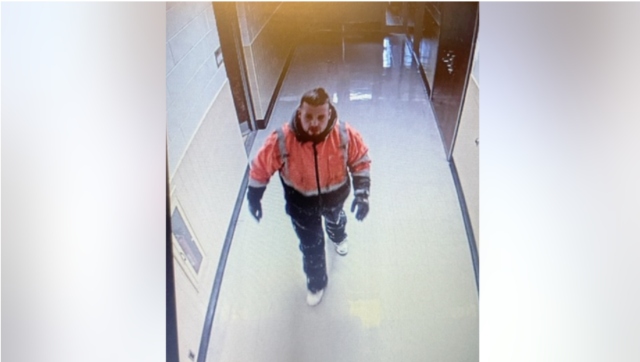Prepping tips: How to survive with a limited water supply
01/06/2023 / By Zoey Sky

Having access to clean drinking water is crucial to your daily life. Stocking up on water should also be a part of your preps before SHTF.
But what do you do if you only have a minimum amount of water left in your survival stockpile? (h/t to PreppersWill.com)
According to the survival rule of threes, humans can live:
- three minutes without breathing
- three hours without shelter in an extreme environment
- three days without water (dehydration)
- three weeks without food (starvation)
This means that you can survive longer without food than water, highlighting the need to stock up on enough water for your family before disaster strikes.
The maximum number of days you can survive in ideal environmental conditions is believed to be five to seven days. But such conditions are hardly ever met.
Even if you add dehydration to the equation and other factors like the type of diet (especially one that includes salt) and liquid reserves of your body, a moderate to increased level of activity and an increase in temperature, you would only survive for about three days or so.
The human body relies on water so much that if you lose five percent of your bodily fluids, you will start to feel a sensation of thirst. If you continue to lose more fluids, you will start to become irritable, weak and nauseous.
If you hit a 10 percent loss of bodily fluids, you will start to feel dizzy. You will also experience headaches and a tingling sensation in the limbs. You will have trouble walking, and you will become more irritable.
At a 15 percent loss of bodily fluids, the side effects you experience will worsen. Dehydration will affect your vision, you will feel pain when urinating and your tongue will be swollen. Other symptoms at this point may include deafness and numbness.
If you start losing bodily fluids when disaster strikes, keep in mind that your body needs to compensate in some manner for all the lost fluids.
It does so by increasing your heart rate and constricting blood vessels. Such protective action will help maintain blood pressure and assure proper blood flow to vital organs.
But this state cannot be maintained for long without causing symptoms like nausea, weakness and, eventually, delirium.
If you do not quickly replenish the lost bodily fluids, you will become more dehydrated. Next, your brain and organs will receive less blood. Dehydration may eventually result in a coma, organ failure and death.
Learn to spot the signs of dehydration and how to prevent them
If you are lost in the wilderness with no access to clean water or a limited water supply, you should know how to spot these signs and symptoms of dehydration:
- Unusual fatigue
- General weakness
- Darkened skin around the eyes and loss of skin elasticity
- A deep line forming down the center of the tongue
- Dark urine with a strong odor
- Flushed (red) skin
- Swollen feet
- Muscle cramps
- Heat intolerance or chills
- Constipation
- Headache
- Delirium
- Confusion
- Dizziness
- Weakness, light-headedness
- Dry mouth
- A dry cough
- High heart rate, but low blood pressure
- Loss of appetite, but maybe a craving for sugar
Some symptoms may also coincide with heat-related illnesses.
The patient may suffer from heat cramps (muscle cramps), heat exhaustion (with side effects like dizziness, a state of confusion, headaches and excessive sweating), along with heat stroke (with side effects that may include lack of sweating, increased pulse, nausea and, eventually, unconsciousness).
If you have to bug out or travel outdoors for various activities, prepare and bring enough supplies to prevent dehydration.
The human body’s normal temperature is 98.6 F and once it heats up, it will regulate its temperature and get rid of the excess heat by sweating.
The more activity you perform or the more the air temperature increases, the more you will sweat. This then results in loss of moisture.
Sweating depletes your body of water, and it can cause health issues if you are already dehydrated. Note that if you stop sweating during intense activity while in a hot environment, your body will suffer from a heat-related disorder.
To avoid these adverse effects, you have to maintain a steady body temperature and replace the water your body loses by drinking more water.
Most people will drink water only when they get thirsty, but this is a wrong approach whether you’re in an urban environment or somewhere outdoors. Prevent dehydration by drinking small amounts of water at regular intervals even if you don’t feel thirsty. (Related: Prepping 101: How long will bottled water last in your stockpile?)
Take a few sips of water every hour to keep your body cool and decrease sweating. Drinking a few sips of water every hour will help keep your body cooler and reduce water loss.
Another way to conserve your bodily fluids is by reducing or avoiding strenuous activity during the hottest part of the day.
If you are dealing with a survival scenario and your food intake is lower than normal, try to make up for it by drinking at least six liters of water per day. And if you are in an arid climate, remember that the average person can lose up to three liters of water each hour.
Address this by drinking at least 10 ounces of water every 30 minutes. A dry mouth will maintain a constant feeling of thirst. If you’re having trouble drinking water because of the thirst sensation, rinse your mouth with water for 20 to 30 seconds before swallowing it.
Regardless of what food you’re eating, drink water with your food to help the digestion process. If you have a limited quantity of water, try to limit your food intake and save water that you will later need for cooling your body.
To prevent dehydration, make sure you stock up on clean drinking water before SHTF.
Watch the video below to know more about how dehydration affects your overall health.
This video is from the Holistic Herbalist channel on Brighteon.com.
More related stories:
Prepping 101: Emergency water storage for beginners.
4 Tips to prevent emergency water from freezing.
Water supply and prepping: A beginner’s guide to rainwater collection.
Sources include:
Submit a correction >>
Tagged Under:
bug out, clean water, dehydration, how-to, off grid, preparedness, prepper, prepping, prevention, SHTF, survival, survivalist, tips, water, water supply
This article may contain statements that reflect the opinion of the author
RECENT NEWS & ARTICLES
COPYRIGHT © 2017 DISASTER NEWS




















